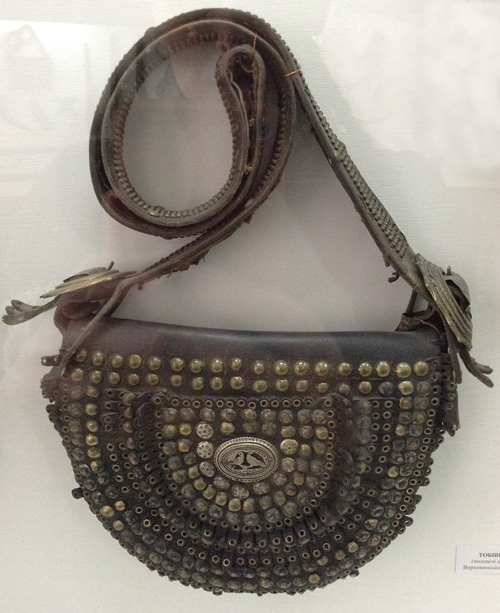 The Hutsul clothing tradition is interesting because of its peculiarities and uniquity. Local craftsmen were (and still are) especially skilled in working with leather and metal. We’ve already written about Ukrainian traditional jewelry made from brass. And now, we’d like to talk about folk clothing accessories used in the Carpathian region – ornate leather shoes, belts, and bags. These pieces are so very beautiful and remarkable that we can’t miss the opportunity to show them to you.
The Hutsul clothing tradition is interesting because of its peculiarities and uniquity. Local craftsmen were (and still are) especially skilled in working with leather and metal. We’ve already written about Ukrainian traditional jewelry made from brass. And now, we’d like to talk about folk clothing accessories used in the Carpathian region – ornate leather shoes, belts, and bags. These pieces are so very beautiful and remarkable that we can’t miss the opportunity to show them to you.
Hutsul footwear
Postoly
Up to the 20th century, footwear in Ukraine was a rare thing. During the warm months, people used to walk barefoot in day-to-day life. Their feet got used to the roughness of pathways and soil.
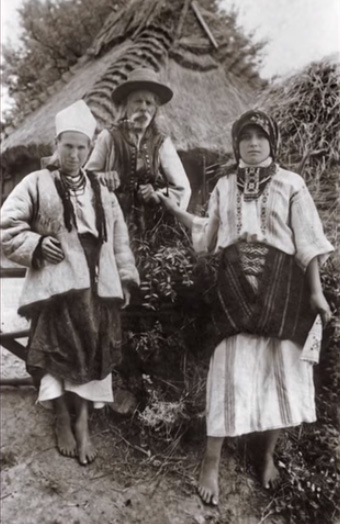
But, of course, there were leather shoes and boots. Often, people wore footwear on holidays, weddings, for long-distance walking, and other occasions. In the Carpathian region, leather shoes called “postoly” were the most widespread.
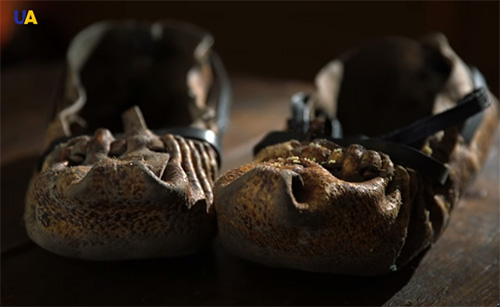
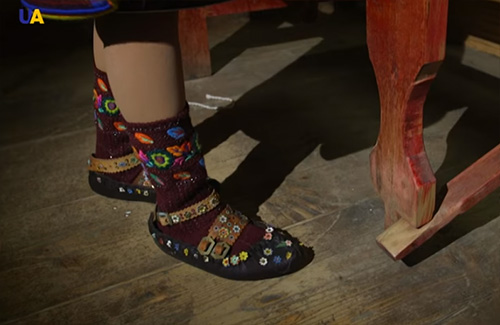
These shoes are comparatively simple to make. They were often made from crude leather. But in this case, a person had to put them on as soon as they were made, while the leather was still soft and damp. Because after it dried up, the shoe became hard, solid, and inflexible. You had to use them for some time without taking off so that they got the shape of your feet. Later, postoly were usually worn onto woolen socks, so the firmness of the leather didn’t matter much.
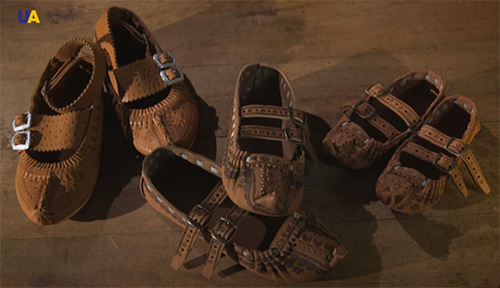
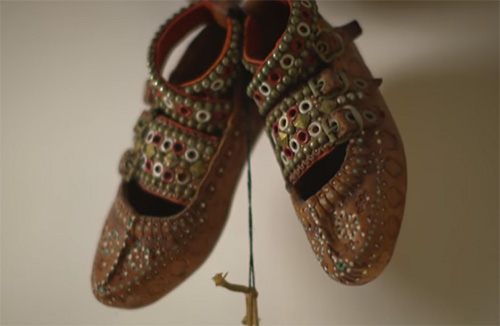
Thin fine leather was also used to make postoly. They were much softer and comfier – people could use such shoes at once after their making. But leather had to be wet during the process of making these postoly – to easily take the shape of one’s feet.
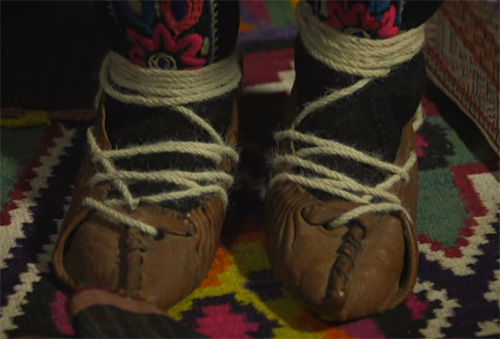
The cut and design of the first postoly shoes were simple. The artisans used wooden casts to give a certain shape to the shoe. And by the way, there were no actual sizing.
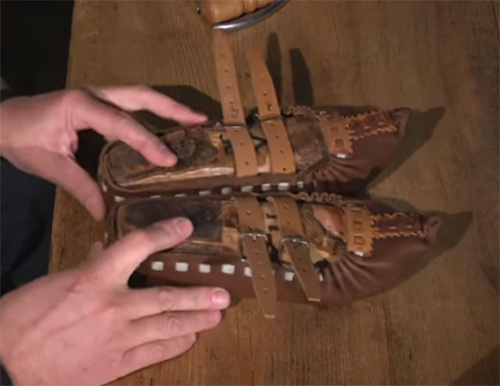
The toes of postoly shoes were turned-up – pointed and hooked (similar to the Finnish Saami reindeer boots).
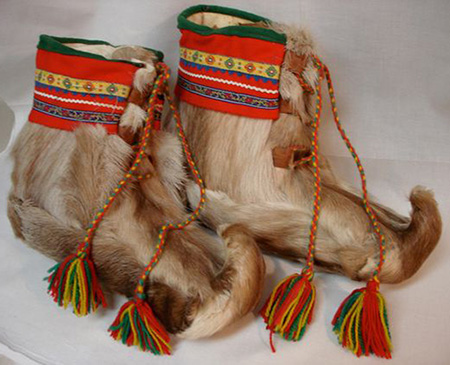
Saami reindeer boots (Finland)
The shoe itself was tied to the foot by a leather strap that was pulled through the upper edges of a shoe and constricted.
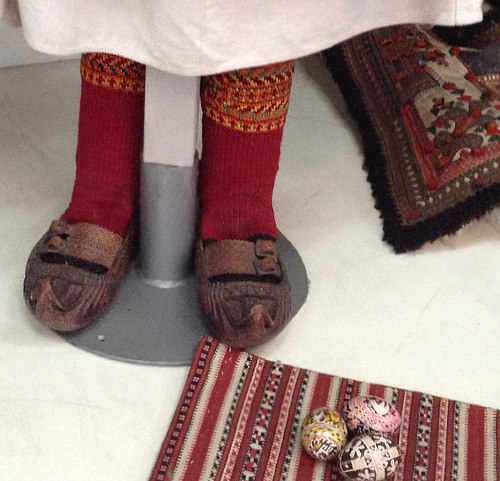
Postoly were the all-season footwear. In warmer seasons, people used special knitted socks with these shoes. In winter – socks sewn from woolen cloth and adorned with embroidery on the upper edge.
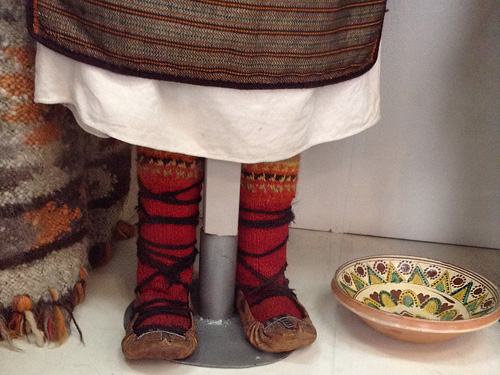
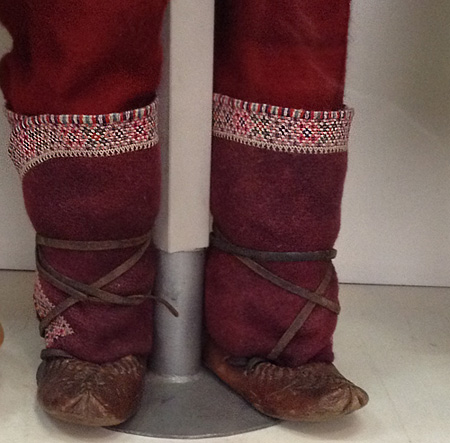

Boots
Postoly were used by ordinary people, while leather boots were worn by wealthy men and women. The middle-class Ukrainians often had boots but used them only for special occasions. For instance, the bride and groom could be wearing fine leather boots.
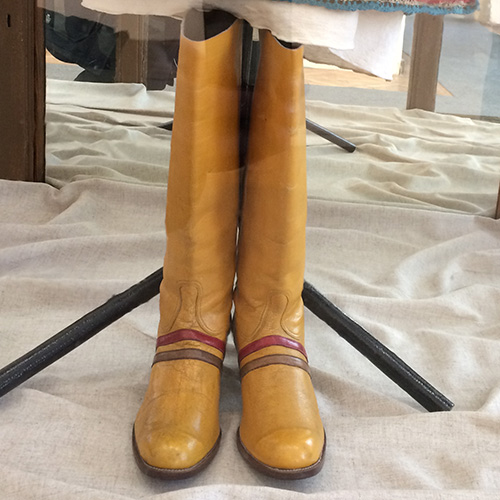
Among the most high-quality boots, were so-called “marigold boots”. They were made from black (from bottom to ankle) and brown (from ankle to top) leather. Female “marigold boots” had appr. 5 cm (2 inches) heels, male were heelless.
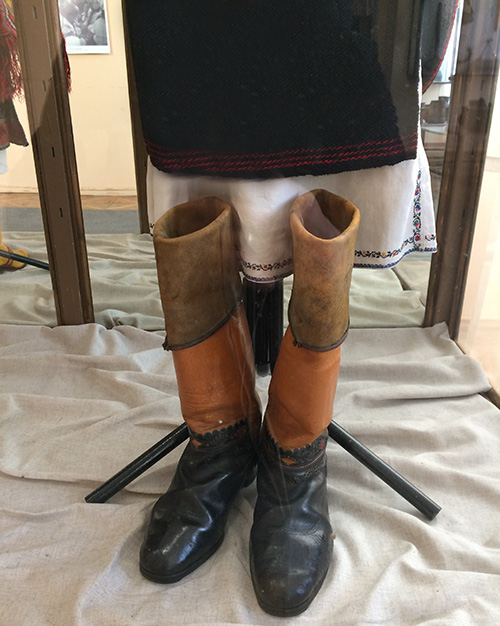
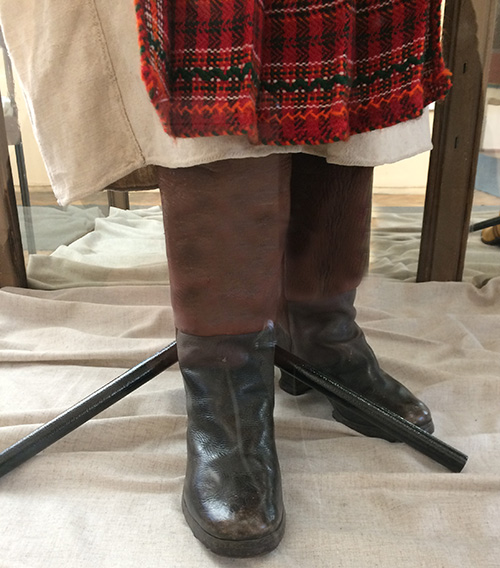
Interesting fact about Ukrainian handmade boots. There were so skilled shoemakers in Ukraine that they could make on purpose leather boots that squeaked. And the squeak had to be different for each pair. Young men even could recognize their girl-friends in the dark by the squeak of their boots.
Hutsul leather belts
In the Carpathian region of Ukraine, people wore leather belts which often were ornate and very skillfully made. A very wide leather belt is called “cheres”. It was made from thick ox leather folded up twice. The width of it could be up to 20-45 cm (8-18 inches) and it could have 1-6 belt buckles.
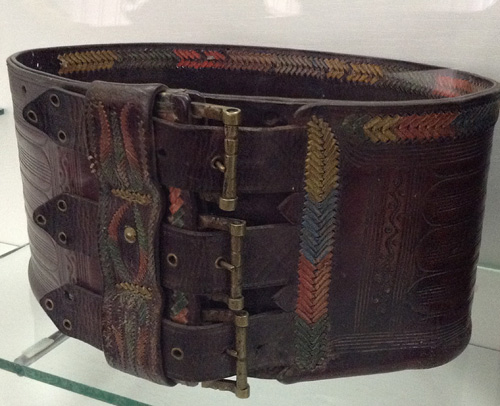
It had several purposes, one of which was to store money during the trip. Other small objects could be attached to it (knife, pipe, fire striker, etc.).
Also, it served as back support. In the Carpathian area, people often worked in logging and other heavy lifting jobs.
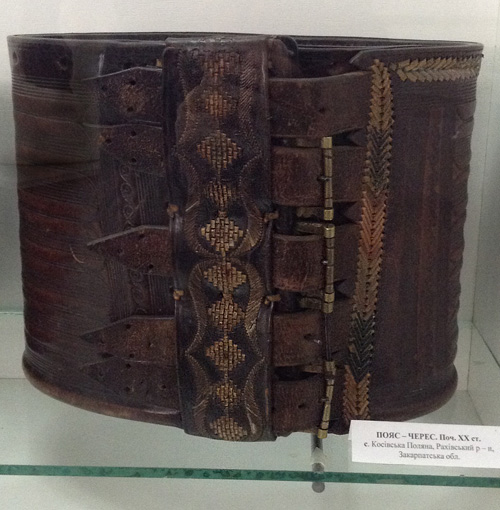
Cheres was even used as body armor by local warriors and fighters. They sewn coins to the inside of the leather belt and bullets ricocheted from such armor. It could protect from knives and daggers easily.
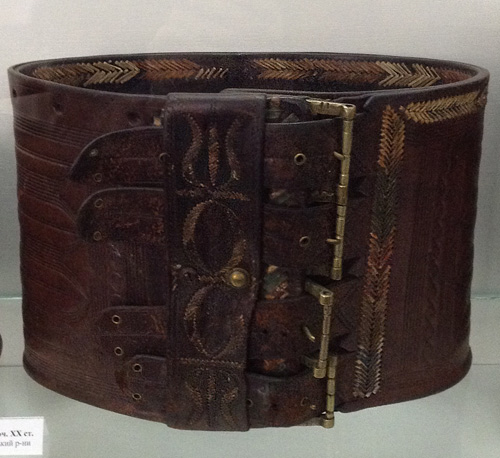
Cheres belts were usually beautifully and richly decorated – with embroidery, stamping, applique, brass (or other alloys) elements, beading, etc. The buckles also were mostly brass and adorned with patterns.
Hutsul bags
A shoulder bag called “tabivka” was an obligatory part of a male traditional costume from the Carpathian region of Ukraine. Local females usually wore woven shoulder bags, while males used leather bags. Tabivka bags could have a rectangular or semicircular shape. They were ornate, same as leather belts – adorned with stamping, metal decorations, and massive stylized buckles. Such shoulder bags were heavy because of all the embellishments – up to 1.5 kg (2.2 lbs).
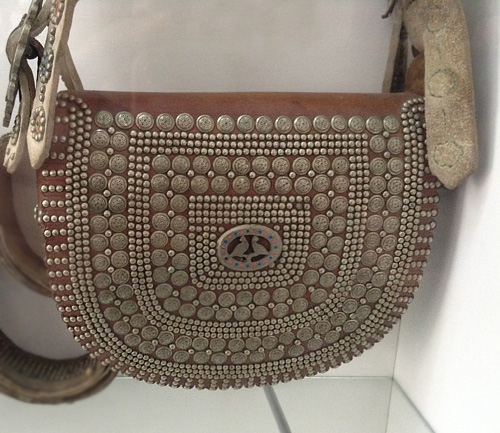
Tabivka was not only a handy thing (because people didn’t really have or use pockets – they carried their belongings in such small bags), but also a symbol of social status. Only a married and wealthy man could afford an ornate tabivka bag, the one who achieved welfare.
